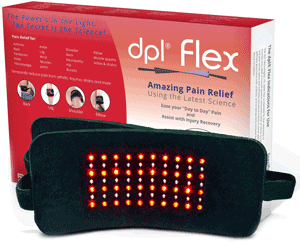Using s SAD lamp can be a very effective way of treating depression and symptoms of Seasonal Affective Disorder. Studies have shown that there are many benefits to light therapy and that it can be a more effective treatment than taking medication with fewer side effects.
With so many different types of light therapy lamps on the market, it can be hard to know which light is the right one. There are varying sizes, prices, shapes, and features to choose from, so it can be difficult to know which type of SAD lamp will work best for your symptoms. Here are a few tips on what to look for in the best SAD lamp to improve your mood and life.

Table of Contents
Who Needs a SAD Lamp?
An effective tool to treat seasonal affective disorder (SAD), light therapy provides an individual with exposure to artificial light. SAD is a type of depression that often happens during either the fall or winter, and light therapy is used to mimic the bright outdoor light that we miss at that time of year.
Also known as phototherapy or bright light therapy, light therapy is done with a SAD lamp that you either sit or work near. This type of therapy is found to affect those brain chemicals that are linked to sleep and mood thus easing any SAD symptoms. You can also use a SAD lamp to treat other types of depression as well as sleep disorders and other conditions.
Type of Light
The first feature you need to look for in a lamp is a light that will produce a certain amount of lux, which is the unit of measurement for the brightness of light. The main purpose of a SAD lamp is to replace the light you missing from short, winter days.
A typical indoor light will have a brightness level around 100 lux while a normal overcast day with tons of clouds can have a brightness level of about 1,000 lux. Sunny days have a brightness level between 10,000 to 100,000 lux with the 10,000 lux figure based on scientific research. At this brightness, researchers have found that SAD lamps are effective which makes sense as that is the minimum brightness of a normal sunny day.
The lamp should mimic the light from the sun and should be either a full or broad spectrum. There are some SAD lamps that produce blue light which research suggests is the most important area of the spectrum for mood improvement. You can find some SAD lamps with blue lights that are effective, but they tend to be smaller and more effective at a lower brightness.
Noise and Flicker Free
There are some fluorescent lights that can flicker which is a problem for those that are sensitive to it. Make sure your lamp is flicker free so you don’t get nausea or headaches. Many manufacturers are aware of these issues and use technology that fixes it.
An electronic ballast is often used to get rid of the flicker as well as the annoying hum that often accompanies a fluorescent light. Make sure to keep this in mind as you shop so you don’t end up with a lamp that causes an unpleasant and uncomfortable experience.
Portability
If portability is important to you, you should pay attention to the size and shape of the SAD lamp you are considering. If you need to take it to work with you or away with you on the weekend, it will be difficult to carry an awkward and heavy around. Smaller lamps generally tend to use LED bulbs which are smaller than fluorescent bulbs. Blue lights are also often found in the smaller lamps since they are less powerful.
The shape of the lamp can also hinder its portability, especially if it comes with a large attached stand. Stands are great features, but they can be difficult to move from place to place. Durability is also important for portability, and you should look for a lamp that uses LED lights which are more durable than fluorescent bulbs.
Light Intensity Settings
Intensity settings can help people become used to using a SAD light as many people suffer from nausea, headaches, or jitteriness when they first start using them. You will find that some SAD lamps let you change the intensity of light with their highest setting around 10,000 lux.
Setting the intensity lower allows you to use it for longer periods of time, and many people find that when they start out a lower setting, they can increase the intensity as they get used to the lamp which helps to reduce side effects. You will find some lamps with just one setting, others with two settings, and some models that come with a lux dial providing you with multiple intensity settings.
Timer
On average, about thirty minutes is the recommended time to use a SAD lamp. This is an effective dose according to research, but some users find that thirty minutes is not very effective and may use it for up to an hour. Other users have even found they need another session later in the day to help them.
Consistency is important when using a SAD lamp and this is often helped by using an inbuilt timer so that you can track how long you have been using the light. Some timers will even switch the light off at the end of the time that you have set.
Stand
Many SAD lamps come with a stand that lets you change the angle and height of the lamp, which can be very useful. One of the best positions to place your SAD lamp is right in front of you about six inches above your eye line which is the position that best matches that of the sun.
There are several considerations to make when choosing a SAD lamp that will best suit your symptoms and needs. Finding the right style, shape, brightness, and intensity levels are all important in helping your receive the right amount of therapy to treat your symptoms. Your mental well-being is very important as is finding the perfect SAD lamp for your needs.


